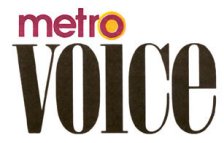U.S. church membership drops below 50 percent for first time
Less than half of Americans now say they belong to a house of worship, which is the lowest number since polling began in the mid-1930s. The decline is part of a continued drop in membership over the past 20 years, according to Gallup data.
Though polling only began in the 30s, historians believe church membership was even higher previous to the 20th century.
The polling company has been measuring church membership since 1937 when nearly three-quarters of the population reported membership in a house of worship. For much of that time, membership remained at about 70 percent but began to decline after 1999. By the late 2000s, membership had dropped to about 62 percent and has continued to fall.
Decline coincides with “Nones”
The decline in membership coincides with the rise of the so-called “Nones” — those who claim no religious affiliation. Gallup reports about one in five Americans is a None, making them as large a group as evangelicals or Catholics. Other polls put the number closer to 30 percent. Few Nones belong to a house of worship, Gallup found.
“As would be expected, Americans without a religious preference are highly unlikely to belong to a church, synagogue or mosque, although a small proportion — 4 percent in the 2018-2020 survey)— say they do,” the report said. “That figure is down from 10 percent between 1998 and 2000.”
The new challenge
The gap between those who believe in a specific religion and those who participate in the life of a specific congregation is likely to prove a challenge for houses of worship. And the decline in church membership is likely to continue, according to Gallup.
“Churches are only as strong as their membership and are dependent on their members for financial support and service to keep operating,” the report said. “Because it is unlikely that people who do not have a religious preference will become church members, the challenge for church leaders is to encourage those who do affiliate with a specific faith to become formal, and active, church members.”
From the report:
As would be expected given the 20-point decline in church membership overall, the Gallup data show declines among all major subgroups of the U.S. population beyond age, with some differences in the size of that decline.
Among religious groups, the decline in membership is steeper among Catholics (down 18 points, from 76% to 58%) than Protestants (down nine points, from 73% to 64%). This mirrors the historical changes in church attendance Gallup has documented among Catholics, with sharp declines among Catholics but not among Protestants. Gallup does not have sufficient data to analyze the trends for other religious faiths.
In addition to Protestants, declines in church membership are proportionately smaller among political conservatives, Republicans, married adults and college graduates. These groups tend to have among the highest rates of church membership, along with Southern residents and non-Hispanic Black adults.
–Dwight Widaman | Metro Voice









